What would happen if you were in the Cable Car sightseeing the views, or maybe even commuting, and it broke down? It’s not exactly the sort of transport system that you can get out and walk to the nearest exit.
As it happens, despite the regular closures for high winds, or tall ships, a mechanical failure should be next to impossible due to the fairly substantial numbers of backup systems designed into the Cable Car. However, the regulations say that they still have to have an escape plan, and it has to be tested at least once a year. So test them they do.
The annual maintenance closure being an ideal chance — today, therefore, saw a lot of people in rigging kit climbing along the cables to rescue a couple of trapped dummies who were now stuck in a cable car over the river.
Standing around in the freezing cold taking photos through a long lens means this is not the sort of thing that is going to attract the crowds, although in some countries, cable car owners make a bit of a fuss about their tests and encourage people to turn up and watch.
In the absence of any loudspeakers offering commentary, here are some photos of this morning’s exercise.
The maintenance cage heading to the south side to collect rescue personnel
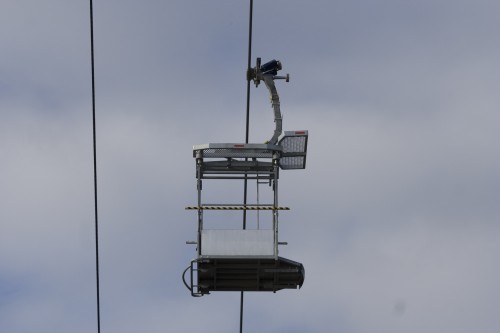
Heading back out laden with rescue staff — these are high-level workers who do jobs all over London on the outside of tall buildings, and happen to be the rescue team for the cable car
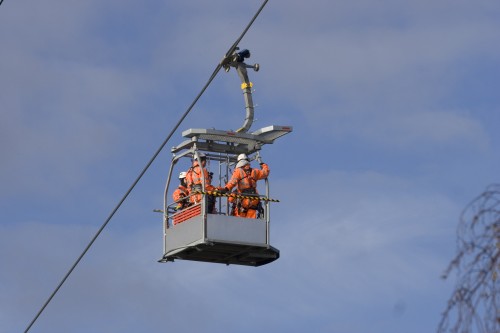
Arriving at the North pylon, with the “stricken” cable car following on behind.
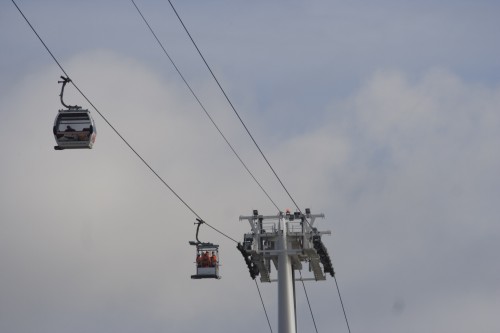
Climbing out to get onto the pylon
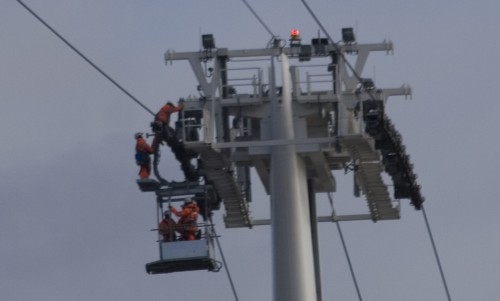
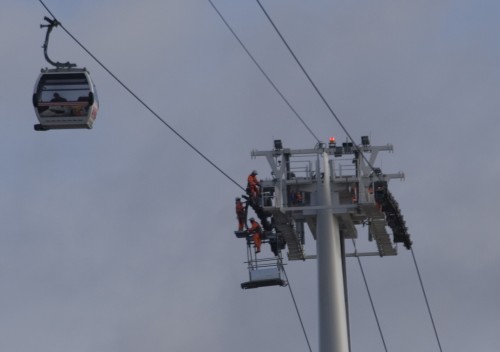
I guess this qualifies as a good viewing location. If a bit windy. And scary.
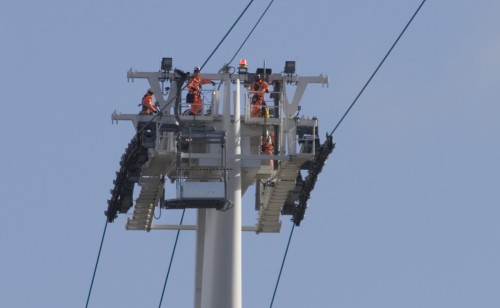
OK, this is how they get back out again — the climb along the cable wires.
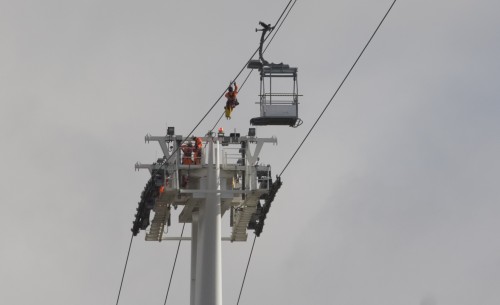
Back out to the maintenance car, which seemed to be acting as a useful resting point half way between pylon and cable car.
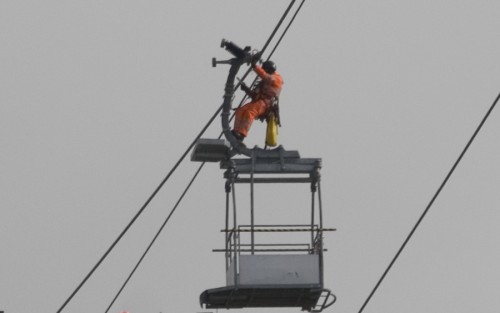
Rest over, time to carry on climbing over the cable car.
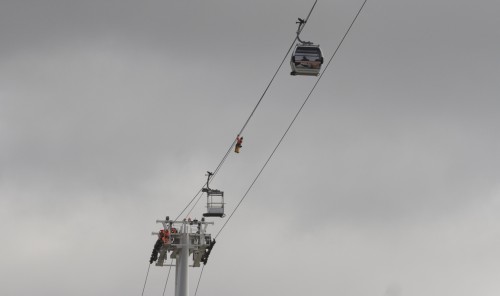
And arrived.

More followed on behind.
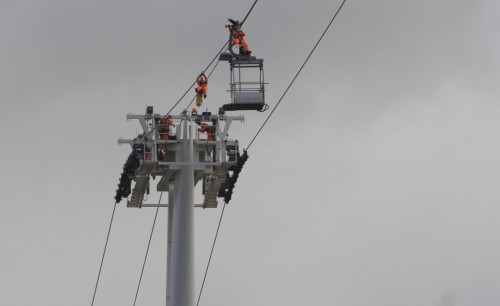
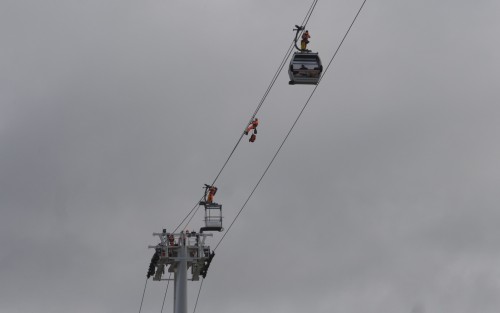
All three together on the cable car — and two on the maintenance car behind.

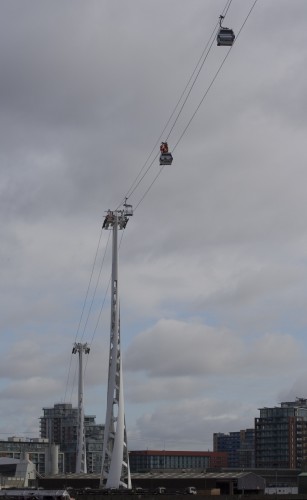
Over the edge to open the doors and go inside.
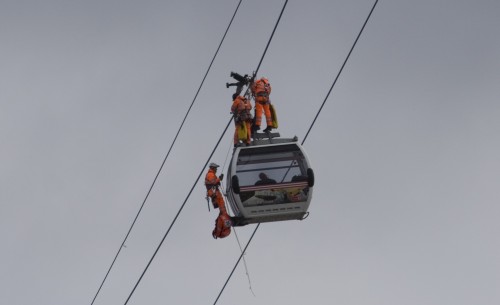
Inside — and comforting the crash test dummies.
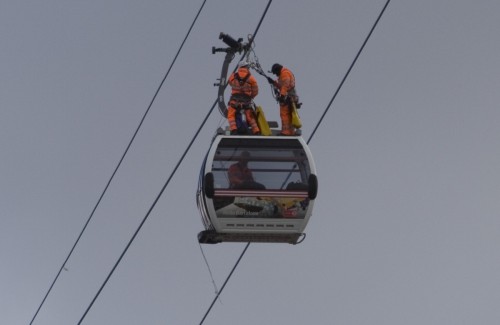
More people doing things on the maintenance car — seemed to be lowering ropes of their own.

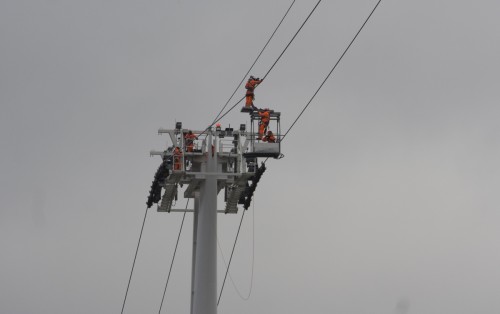
A rope is lowered, with a heavy weight attached to keep the rope steady in the wind.
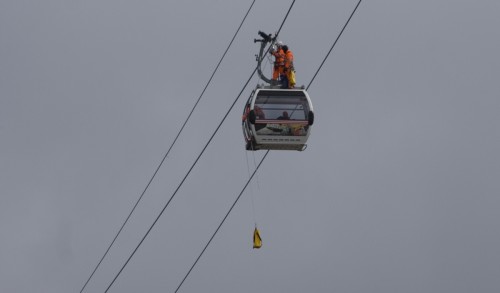
Out goes the first passenger.

Lowered away
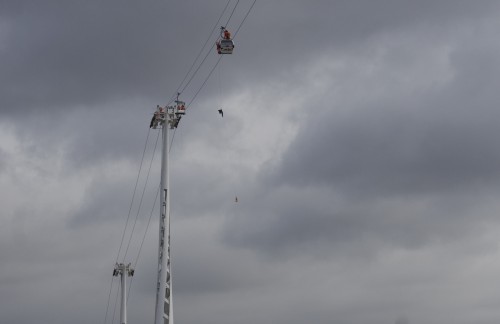
Down to a waiting boat
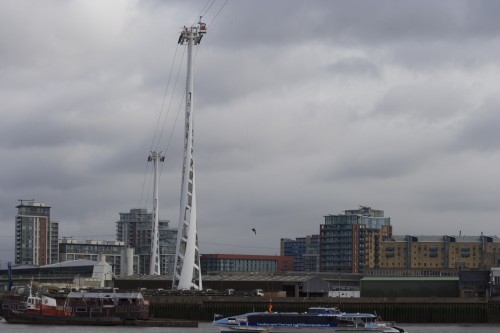
And safe again.
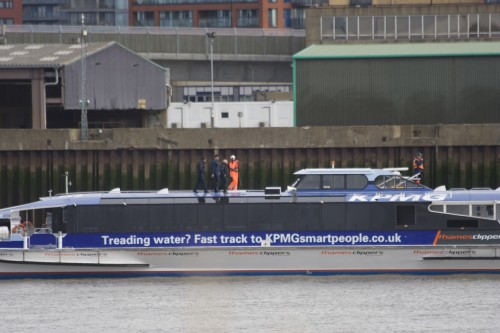
Realistically, the rest was going to be fairly similar, and as it was freezing cold, I headed home.
I would presume that abseiling out of the cable car would be the absolutely last thing they would do if none of the other options existed, and somehow all the backup power supplies and motors all broke down at the same time.
But wouldn’t a passenger have a great story to tell over dinner time.







But how does the maintenance car get there? Normal there’s more than one passenger cabin?
I would guess that if the maintenance car cant carry them up, then they would simply walk up the stairs in the pylons to get to the top.
think this may be all for show. most likely they would leave you there until problem solved. it be safer…unless there was some sort of threat to life like fire or possible collapse? then maybe helicopter(s) may be used?
and what of the London Eye? …what would happen there if “all power failed”?
perhaps this cable car thingy should not been built…instead a decent bridge would have made more sense when you think of the sort of places cable cars are normally used in the world.
As I noted, they have to have a viable escape plan, and abseiling down is significantly easier than trying to winch out from a helicopter.
As to the bridge — it was looked at, and was considerable more expensive than the cable car as a transport option.
…and have “we” moved to “daylight saving time” a week early on here??
bridge (or tunnel) would no doubt been more expensive…so is building HS2 than say a “normal” train track. it what percentage “return” one gets for the investment that maybe matters most. a decent bridge that could be used by cyclists & buses, with maybe a toll for private cars would have been more useful long-term.
The difference is that you build for the capacity you expect. On a per-user basis, the cable car is cheaper than a bridge.
I normally like cable cars, but I’ve been on “The Dangleway” twice and not enjoyed it either time. Don’t know quite why….
Ropeway evacuations are quite common, and although they are the last resort, there is usually very little troubleshooting time before an evacuation is called. If the problem isn’t obvious, or one of the backup systems won’t solve the issue, evac should happen quickly. Since most Gondolas exist at Ski Hills, weather is the determining factor. A full evacuation, of even a small chairlift, can take hours. Sitting in the cold on a loaded gondola, if the evacuation does not start quickly, it may be quite some time before the last people are out. Of course the weather in London extends the wait time somewhat, but there may people who need to use the washroom, medical needs, and other issues that are time-sensitive.
When I worked at a Ski Hill, should a lift go down, the operators had 5 minutes to correct the issue. If they couldn’t fix it, lift mechanics were called, and would arrive within 5 minutes. They then had another 5 minutes to troubleshoot before they would have to call an evacuation. Evacuation would then stat within 5 minutes, so it would be less then 20 minutes from when the lift broke to when the first people were lowered down. The mechanics would continue troubleshooting, but once the evacuation was called the lift did not restart until evacuation was complete.
As I said, these timelines could be longer in London if the weather is co-operating, but time remains limited. The requirement to organize boats would also affect the timelines of the rescue.
I wonder what sort “time rules” are used on the London Underground?
If I recall correctly there have been incidents were people have been left stuck on a hot train in a tunnel for over a hour.
This is rather cool but scary!